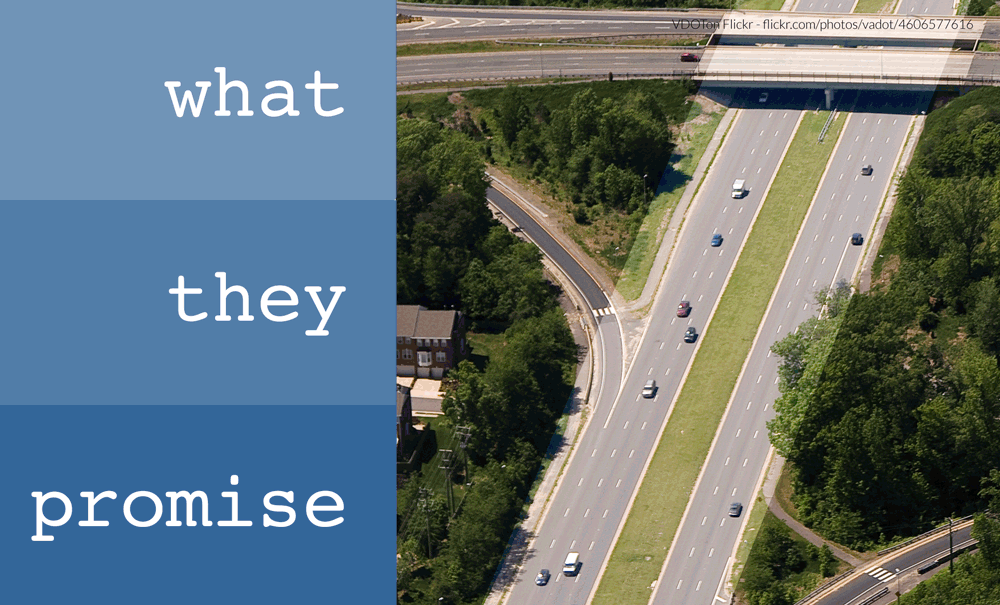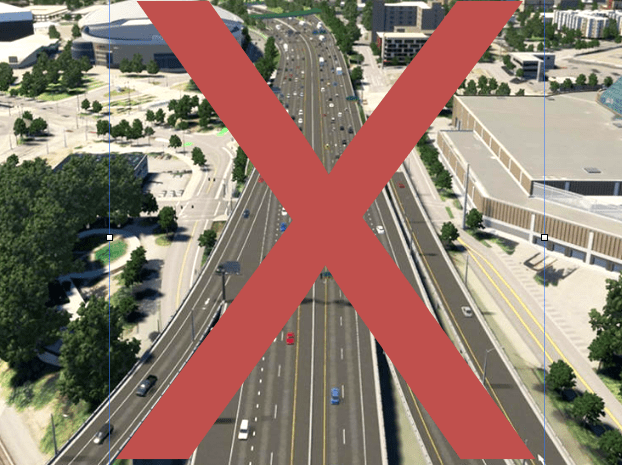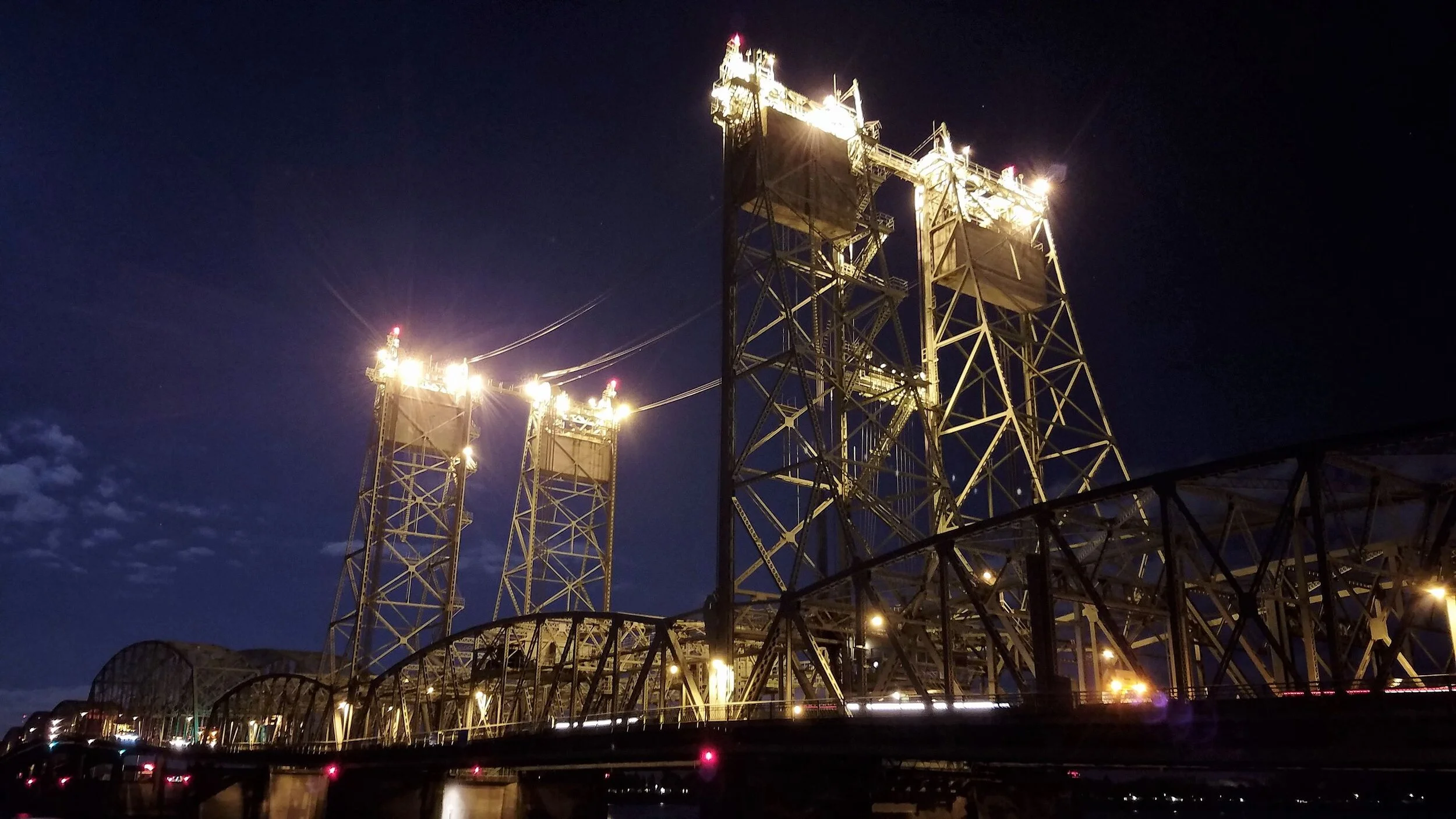"Carmaggedon" Does a No-Show in Seattle. Again.
Strong Towns member Joe Cortright runs the think tank and blog City Observatory. This post is republished from City Observatory with permission.
The most favored mythology of traffic reporters and highway departments is the notion of traffic diversion: If you restrict road capacity in any one location, then it will spill over to adjacent streets and create gridlock. It is invariably used as an argument against any plans to slow car movement or repurpose capacity for transit, cyclists or people walking.
Time and again, however, when road capacity is reduced, either by design or accident, the predicted gridlock fails to materialize. One recent instance of this was just in the past month. When New York closed 14th Street to most car traffic, speeds on parallel streets 13th and 15th were unaffected, according to traffic monitoring firm Inrix.
Crying Carmaggedon, again
The latest case study comes from Seattle. Earlier this year, the city opened a new $3 billion tunnel under downtown Seattle, to replace the road capacity lost by the demolition of the city’s aging eyesore, the Alaskan Way viaduct. Since it opened, the new SR 99 tunnel has been free to vehicles, but starting last Saturday, the state department of transportation started collecting tolls (electronically). What was free last Friday, now costs afternoon peak hour travelers between $2.25 (if they have a transponder) and $4.25 if they use the pay by mail option). Even so, the toll revenues will ultimately cover only about 10 percent of the cost of constructing the tunnel.
The Washington State Department of Transportation (WSDOT), which operates the new SR 99 Tunnel, warned of severe traffic congestion, predicting that more than a third of the 70,000 vehicles that use the tunnel each day would divert to city surface streets. Local TV Station KIRO warned motorists:
WSDOT projects around 35 percent of tunnel drivers will avoid tolls in the tunnel and jam downtown streets instead.
That’s pretty scary stuff. How is Seattle’s latest brush with Carmaggedon turning out? Because Monday was Veterans Day, Tuesday, November 12, was the first regular business day in which the tolls were charged on the new tunnel. So what happened?
Well, see if you can tell. Here are the Google maps for traffic conditions in downtown Seattle on a typical Tuesday afternoon and for Tuesday, November 12, the first regular business day with tolling in place on the SR 99 tunnel. On the left is Google’s map of actual traffic levels at 5:10 PM on Tuesday November 12, showing Google’s familiar color-coded congestion rankings (green is moving smoothly, yellow is slowing, red is stop and go). On the right is Google’s depiction of traffic conditions on a typical Tuesday at 5:10 PM. You can spot one big difference right away. The left-hand map shows the tunnel as two parallel bright green lines; with tolls, traffic is moving smoothly in the tunnel. But what about all the nearby side-streets in downtown Seattle? Surely they were overwhelmed by diverted traffic? Actually, no. Most of the streets leading to and near the tunnel show green, and traffic conditions in this area are actually better than on a typical Tuesday afternoon.
Source: Google Maps Traffic.
Overall, if you compare these two pictures, it’s pretty clear that November 12’s traffic situation in downtown Seattle was much better than a typical day. Sure, Interstate 5, the freeway to the East of downtown Seattle is congested (as it is most late afternoon weekdays). But downtown Seattle streets, particularly on the west side of downtown are “green,” or free flowing. Overall, there’s a lot more “green” on November 12’s traffic charts than on a typical day. In other words: no gridlock or Carmaggedon here.
Tolling the new SR 99 Tunnel didn’t make traffic worse. If anything, it made traffic better. The tunnel itself was flowing smoothly—it was green rather than red, meaning those paying the toll were getting value for their money. Not only that, but it doesn’t appear that traffic on downtown streets in Seattle was any worse than on an ordinary Tuesday. It’s likely that by reducing travel volumes on the tunnel, tolling reduced the number of cars driving onto downtown Seattle Streets. Small reductions in travel demand that keep roads from crossing a tipping point and becoming congested make traffic move more smoothly.
If this gives you a bit of deja vu, dear reader, it should. Back in January, just before the tunnel opened, the city had to commence demolition of the old viaduct, in order to connect on ramps to the new tunnel. As a result, the city suddenly lost its old waterfront freeway, and didn’t have access to the new tunnel. State highway officials warned that the city was in for weeks of gridlock. But when they closed the viaduct, not only did nothing happen, but as I related at City Observatory, traffic on most of downtown Seattle got better. Rather than simply diverting to other city streets, traffic levels went down; as the Seattle Times reported “traffic just disappeared.”
What road closures teach us about travel demand
So what’s going on here? Arguably, our mental model of traffic is just wrong. We tend to think of traffic volumes, and trip-making generally, as inexorable forces of nature. The diurnal flow of traffic on urban roadways seems just as regular and predictable as the tides.
What this misses is that there’s a deep behavioral basis to travel. Human beings will shift their behavior in response to changing circumstances. If road capacity is impaired or priced, many people can choose not to travel, change when they travel, change where they travel, or even change their mode of travel. The fact that Carmageddon almost never comes is powerful evidence of induced demand: people travel on roadways because the capacity is available for their trips, when when the capacity goes away or its price goes up, trip-making changes to reduce traffic.
If we visualize travel demand as a fixed, irreducible quantity, it’s easy to imagine that there will be Carmaggedon whenever a major link of the transportation system goes away. But in the face of a changed transportation system, people change their behavior. And while we tend to believe that most people have no choice for when and where they travel, the truth is many people do, and that they respond quickly to changes in the transportation system and to road pricing. It’s a corollary of induced demand: when we build new capacity in urban roadways, traffic grows quickly to fill it, resulting in more travel and continuing traffic jams. What we have here is “reduced demand”—when we cut the supply of urban road space, traffic volumes fall.
If Seattle drivers quickly change their behavior in response to a dollar or two of tolls, that’s a powerful indication that more modest steps to price roads don’t really mean the end of the world. If we recognize that, in the absence of pricing, traffic will tend to adjust to available capacity, we then end up taking a different view of how to balance transportation against other objectives. For example, this ought to be a signal that road diets, which have been shown to greatly improve safety and encourage walking and cycling, don’t have anything approaching the kinds of adverse effects on travel that highway engineers usually predict.
There’s one other fiscal codicil to this tale. The tolls that drivers pay to use the new $3 billion tunnel cover barely 10 percent of the costs of construction. The fact that tolls reduce traffic by a third (or more) show that a good fraction of tunnel users are don’t value the tunnel at even a tenth of the cost of providing its right-of-way; and that they’ll use it only if its free. That’s a pretty solid indication that this “investment” has negligible value. In addition, the fact that implementing pricing has caused traffic conditions in much of downtown Seattle to improve is an indication that simply charging a modest price for roadways actually produces net benefits for road users—it encourages those with choices to travel at other times or avoid congested areas, producing better service for everyone. And that may be the real lesson here: the tunnel didn’t make traffic in downtown Seattle better, the toll did.
Carmaggedon never comes
Of course, we’ll wait for detailed data on traffic conditions that will be collected over the next few weeks before making a definitive judgment. But this phenomenon of reduced demand is so common and well-documented that it is simply unremarkable. Whether it was Los Angeles closing a major section of freeway to replace overpasses, or Atlanta’s I-85 freeway collapse, or the I-35 bridge failure in Minneapolis, or the demolition of San Francisco’s Embarcadero Freeway, we’ve seen that time and again when freeway capacity is abruptly reduced, traffic levels fall as well.
There’s a lesson here, if we’re willing to learn it: if you want to reduce traffic congestion, reduce traffic levels. Whether you do it by restricting capacity, or (more sensibly) by imposing tolls that ask motorist to pay for even a fraction of the cost of the roads they’re using, you get a much more efficient system.
From the Strong Towns Team:
Southern California drivers have experience with “the sizzle and the fizzle” of Carmageddon hype. If you want to learn more about how SoCal should be spendings its transportation dollars, you don’t want to miss our Regional Gathering coming up next month in Santa Ana. This is just one of a host of SoCal-specific topics on the agenda. Learn more and register here. Thanks to the generous sponsorship of Fieldstead and Company, tickets are now 75% off. Just use the code BLACKFRIDAY at checkout.
Top photo via Wikimedia Commons.











For decades, state and federal highway agencies have justified massive projects with traffic forecast models. But a closer look reveals a troubling pattern of exaggeration, manipulation and outright falsification in these models.